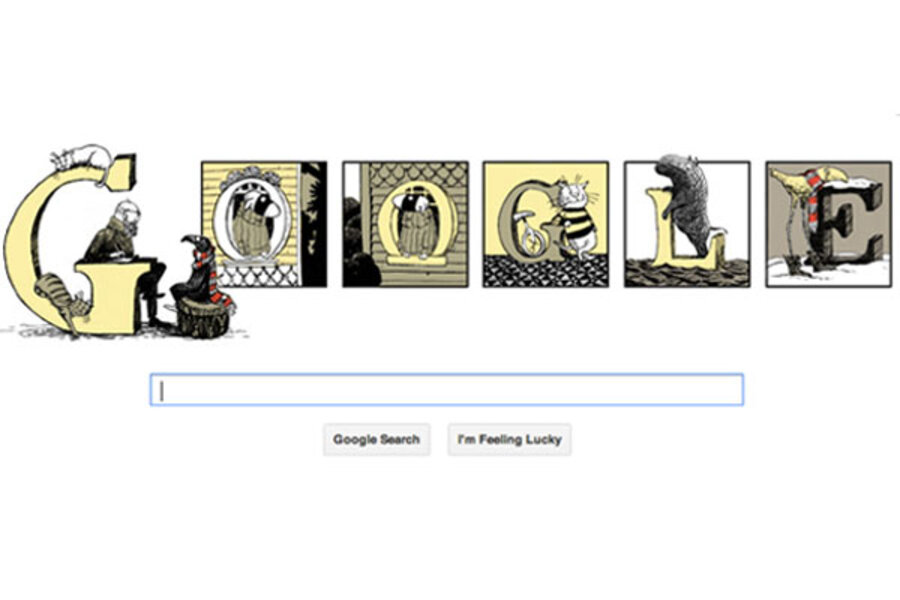Edward Gorey: writer, artist, and a most puzzling man
Loading...
E is for Edward whose heart gave away. That’s Edward Gorey we’re talking about. The American writer and illustrator would have turned 88 today. Google is honoring Mr. Gorey with a doodle featuring the writer and some of his famed artworks.
Gorey’s first book, The Unstrung Harp, was published in 1953. The novel, like the near 70 books that followed, is dark and funny, with a side of morbid whimsy.
For an artist, he claimed to have very little training. Gorey studied at the School of the Art Institute of Chicago in 1943 but left after one semester. Nevertheless, he proved to be a talented artist in his own right. Gorey’s ink drawings and all their intricacies would go on to influence artists, musicians, and even subcultures.
One subculture that particularly admires Gorey’s work is the gothic community. Goths have a distaste for society's mainstream culture, often opting for what others view as peculiar and underground. Gorey’s surrealist art and ghoulish stories sparked the interests of goths.
Ironically enough, Gorey, who is still greatly revered by goths, reveled in the mainstream. He taped and studied commercials. He watched soap operas and sitcoms. He was anything but goth.
“He was fascinated with the stories of soap operas. I could never understand it,” said Alexander Theroux, Gorey’s long-time friend and author of The Strange Case of Edward Gorey, during a 2011 interview with comicsreporter.com.
In fact, Gorey responded to the notion that he was gothic on more than one occasion.
In a 1992 interview with The New Yorker, Gorey said, “If you're doing nonsense it has to be rather awful, because there'd be no point.”
What Gorey meant by "nonsense" was his style of writing. Literary nonsense is literature that utilizes different elements in order to break conventional language or logical reasoning.
Goths, perhaps, are also attracted to Gorey’s defiance of language, such as in this line: "It was seemingly deaf to whatever they said, So at last they stopped screaming, and went off to bed. It joined them at breakfast and presently ate All the syrup and toast and a part of a plate."
However, they would be in shock to find out that the writer shamelessly enjoyed watching Cheers and Petticoat Junction.
In the Guardian’s obituary to the writer, they mention his belief that he was not as morbid as he seemed. Once again, Gorey did not see himself as dismal and removed.
“I see no disparity between my books and everyday life... I write about everyday life,” said Gorey, according to The Guardian
And according to Mr. Theroux, Gorey lived his everyday life just the way he wanted.
“He was one of the few people I've ever known that did exactly what he wanted. Just don't get in his way. He was always heading somewhere. To a movie. He had to have that cultural water floating along all the time,” said Theroux in the same interview. “He thought Golden Girls was hilarious.”
Gorey, in living his life as he wanted, perplexed scholars. This man who was happy, who was peculiar, could write some of the darkest pieces of literature. When he died, he continued to confuse them. His Cape Cod house had several cats, items from yard sales, and 45,000 books.
Gorey’s dark themes appeal to the adults, to goths, to anyone who enjoys a thorough brain scrubbing. And yet, the lightness of his work allows children to enjoy the books as well. The novels are complex, simple, lively, and humorous. Edward Gorey disproved stereotypes, influenced people, made the world a little brighter and a littler darker with each stroke of his pen.
For more tech news, follow Aimee on Twitter, @aimee_ortiz






